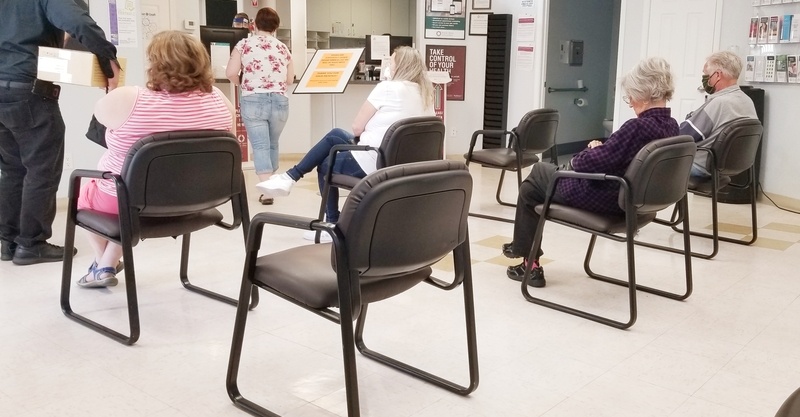One of the most significant challenges facing the healthcare system is staffing shortages. COVID-19 has exacerbated staffing shortages and continues to be an issue. According to a study completed by Definitive Healthcare, nearly 47% of healthcare workers plan to leave their jobs in the next two years. Another US Bureau of Labor Statistics report put healthcare roles down 1.1%, or 176,000, vs. February 2020.
From nurses to doctors to the front desk staff, staff attrition levels are at new heights and are only expected to grow due to retirement and burnout.
While many urgent cares work to find digital solutions, staffing agencies, and other tools (many of which can help), an often overlooked tool for staff experience is making improvements to the patient experience.
The cycle of poor experience
Every patient or client-facing position has its share of challenges, but cultivating a staff that gives their best with every interaction leads to better patient experiences. Your urgent care's receptionist sets the tone for the for patient's experience in the clinic and each healthcare worker in the journey behind them. Each moment counts in the patient's impression of their experience.
Yet at the same time, negative staff experience can reflect staff burnout, overwork, or operational inefficiencies. Friction experienced by patients and staff is most often attributed to operational inefficiencies, such as a lack of interoperable technology systems. Without the right tools, staff spend more time on each patient and patients become frustrated with the wait. .
On the other hand, when staff have the right tools, there is a virtuous cycle rather than a vicious cycle. We found that the average Solv front desk worker saves 4-10 minutes per patient with paperless check-in, and patients want paperless check-in. Solv surveyed over 1,700+ patients and found that 61% of patients said a paperless check-in would meaningfully improve their experience.
Improving Staff Experience
Given the staffing shortage and staff attrition problems, anything an urgent care can do to improve staffing experience is important.
Here are some places to start—
- Proper training
In urgent care, that means ensuring all staff is adequately trained on all tools and protocols. For providers, places like EB Medicine can provide great resources for quick, digestible, and practical materials. While for front desk staff and other workers, training staff on your tool stack helps ensure tools are used efficiently. When staff is well trained, they will be confident to handle issues as they arise rather than responding with frustration.
- Create a culture of engagement
Every employee wants to work someplace where they are appreciated and supported. Recognizing outstanding work and positivity breeds better work and more positivity. Create an environment where employees can be themselves, develop their skills, and feel recognized for their accomplishments by celebrating employee wins. By making development paths known and creating intentional training programs that allow for upward mobility, you will reduce the attrition rate substantially. Did you get great patient reviews? Share them! Encouragement grows.
- Encourage feedback
If your staff feels they can approach management with suggestions and feedback, you can cultivate a collaborative, team-oriented environment. When people feel heard, they speak more. This can lead to even more efficiency as your staff tells you how they can grow and work better.
Improving Patient Experience
When most patients are looking for urgent care, they aren’t in the best frame of mind–they are sick or worried about someone else who is ill. Giving them access and convenience at the palm of their hands takes a lot of the friction to receive care out of the equation.
- Online booking options
When patients need care, they turn to their phone or computer first. 26% of patients will choose a different provider (of any kind of care) if they can’t find same-day availability. Giving them several options for finding online availability meets them where they are. Leaning into those patient behaviors and creating easy ways to find appointments and book online creates instant delight for patients. Plus, online booking eliminates phone calls and walk-ins, eliminating more work for your staff.
- Create a digital check-in experience
Once your patient has made an appointment, digital check-in is your next tool to help everyone in the office. Encouraging patients to register beforehand saves your front desk time and time in the waiting room for patients. Plus, manual entry of patient information is more susceptible to errors. Allowing patients to enter their own data means more accurate information.
- Easy feedback
Once you’ve created an excellent patient experience, give them a chance to tell you about it–and suggest even more ways to improve. Soliciting patient feedback can also help you gain valuable insights into other potential lines of business.
Key Takeaways
- Staff and patient experience are linked.
- Making staff feel seen and heard can increase satisfaction and slow staff attrition.
- Giving agency to patients by providing online booking and registration tools reduces staff workload and enhances patient experience.
Patients and staff are two sides of the same coin–they need and provide care. By creating a better patient experience, your staff will have a more pleasant time at work.
Learn more about how patient experience can enhance staff satisfaction by downloading our 2023 State of Patient Engagement Report.




